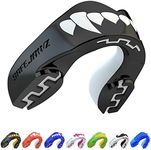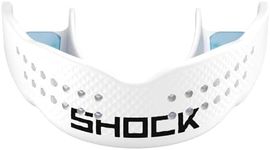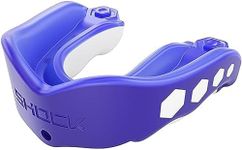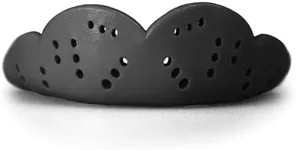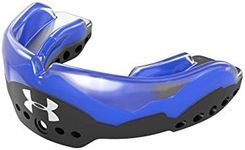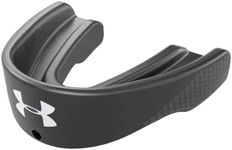Buying Guide for the Best Boxing Mouthguards
Choosing the right boxing mouthguard is essential for both safety and comfort during training or competition. A good mouthguard protects your teeth, gums, and jaw from impact, reducing the risk of injury. When shopping for a mouthguard, it's important to consider how it fits, how well you can breathe and speak while wearing it, and how much protection it offers. Understanding the key features will help you find a mouthguard that matches your needs and ensures you can focus on your performance without distraction.Fit TypeFit type refers to how the mouthguard molds to your teeth and mouth. There are generally three types: stock, boil-and-bite, and custom-fit. Stock mouthguards are pre-formed and ready to wear, but they often fit poorly and can be uncomfortable. Boil-and-bite mouthguards are softened in hot water and then shaped to your teeth, offering a better fit for most people. Custom-fit mouthguards are made by a dental professional using a mold of your teeth, providing the best fit and comfort. If you train regularly or compete, a boil-and-bite or custom-fit mouthguard is usually the best choice, as a good fit is crucial for both protection and comfort.
Material ThicknessMaterial thickness determines how much shock absorption the mouthguard provides. Thicker mouthguards offer more protection, especially for heavy sparring or competition, but they can feel bulkier and may make breathing or speaking harder. Thinner mouthguards are more comfortable and less intrusive, making them suitable for light training or people who find thicker guards uncomfortable. Consider your training intensity: if you expect hard impacts, choose a thicker mouthguard; for lighter use, a thinner one may suffice.
BreathabilityBreathability is about how easily you can breathe while wearing the mouthguard. Some designs have special channels or cutouts to help with airflow. If you find it hard to breathe with a mouthguard in, you may tire more quickly or feel uncomfortable. Look for a mouthguard that allows you to breathe easily, especially if you do high-intensity training or need to communicate with your coach or teammates during use.
DurabilityDurability refers to how well the mouthguard holds up over time. Mouthguards made from high-quality materials will last longer and provide consistent protection, while cheaper ones may wear out, tear, or lose their shape quickly. If you train often, choose a mouthguard known for its durability so you don’t have to replace it frequently and can rely on it for ongoing protection.
ComfortComfort is how the mouthguard feels in your mouth. An uncomfortable mouthguard can distract you or even cause soreness. Comfort depends on the fit, material, and design. If you have sensitive gums or teeth, or if you wear braces, look for a mouthguard designed for those needs. Always try to find a mouthguard that feels secure but not too tight, and doesn’t cause irritation.
Ease of CleaningEase of cleaning is important for hygiene, as mouthguards can collect bacteria and odors. Some mouthguards are easier to clean than others, either because of their material or design. If you want to keep your mouthguard fresh and safe, look for one that can be easily rinsed and occasionally deep-cleaned. This is especially important if you use your mouthguard frequently.
